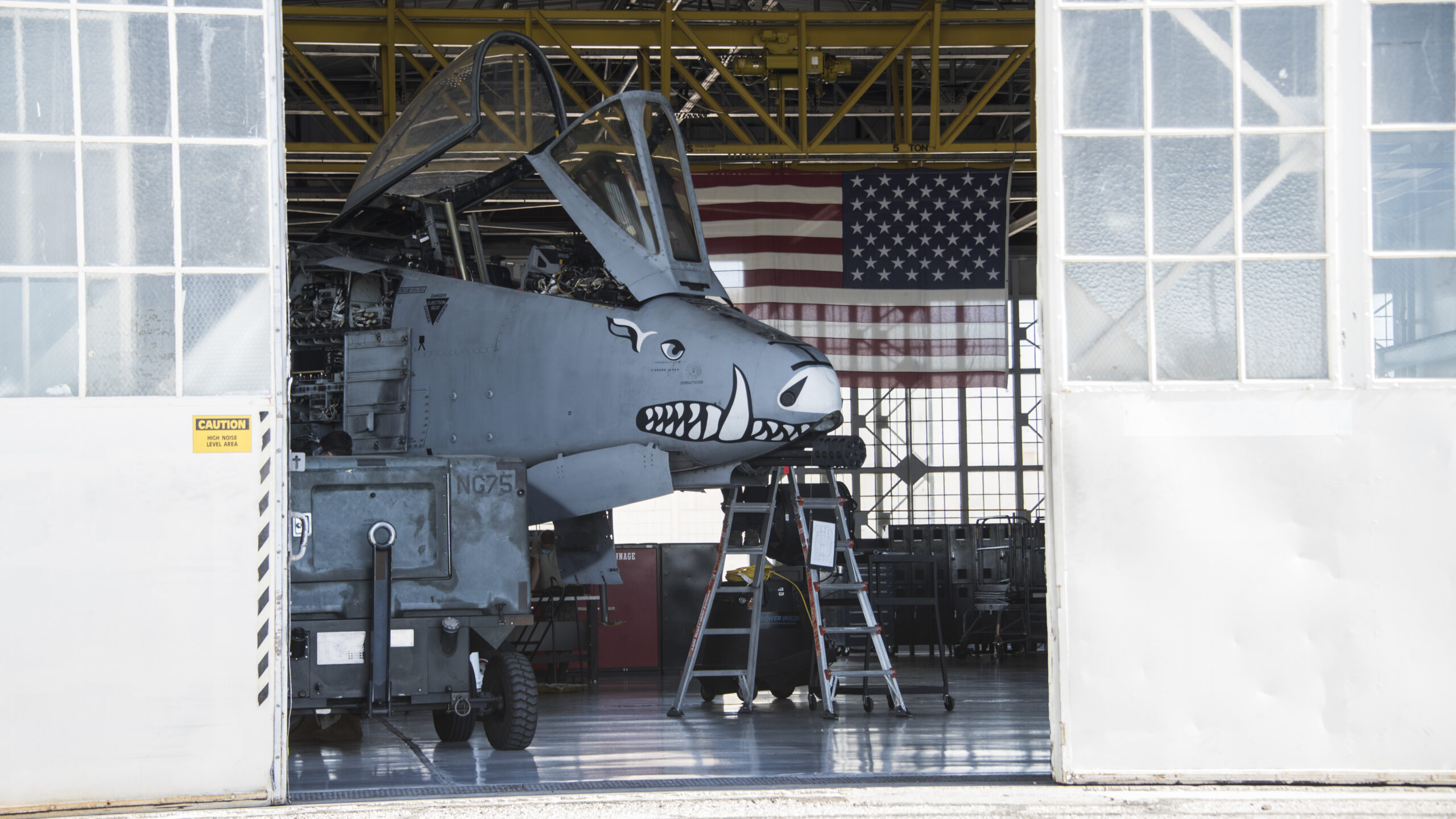
A U.S. Air Force A-10 receives maintenance at Davis-Monthan Air Force Base, Arizona, May 29, 2020.(US Air Force/Airman 1st Class Jacob T. Stephens)
WASHINGTON: It’s beginning to look a lot like Groundhog Day for the US Air Force, with Congress once again denying the service’s request to retire the A-10 Warthog in its fiscal 2022 defense policy bill.
But in the FY22 National Defense Authorization Act, which the House and Senate armed services committees jointly released on Tuesday, the Air Force will be allowed to retire more than 160 legacy aircraft of other types, helping to free up funding for new technologies.
A House aide that spoke with Breaking Defense confirmed that — aside from a prohibition on retiring the A-10 — the Air Force will be permitted to retire all the aircraft it proposed to divest in its FY22 budget request.
That list includes 47 F-16C/Ds, 48 F-15C/D Eagles, four E-8 JSTARS ground surveillance aircraft and 20 RQ-4 Global Hawk Block 30 surveillance drones. The bill will allow the service to divest the 18 KC-135s and 14 KC-10s requested in the budget, while also removing a restriction prohibiting further KC-10 divestments — opening up the door for easier KC-10 retirements in future years.
Lawmakers also approved the divestment of 13 C-130Hs, five of which will be replaced by newer C-130J models, leaving a total fleet of 279 C-130 cargo planes, according to a second House aide.
Yet despite this win for the Air Force, the A-10 remains undefeated. Fiercely protected by the congressional delegation that represents Davis Monthan Air Force Base, Ariz., the attempted divestment of 42 A-10 Warthogs was thwarted, with lawmakers mandating that all 281 of the venerable ground attack plane remain in service.
The House is expected to take up the bicameral version of the NDAA tonight, in the hopes that the bill can move through Congress and be signed by President Joe Biden by Christmas.
The outcome of the FY22 NDAA will be welcome news for Air Force leadership, which has struggled to get Congress to agree to retire older aircraft that generate work at bases in their home districts.
“Our old iron, if you will, our 30-year average airplane is an anchor holding back the Air Force right now,” Air Force Secretary Frank Kendall said Dec. 4 at the Reagan National Defense Forum. “We’ve got to get rid of some of those aircraft so we can free up resources, and get on with modernization.”
Calls from the Air Force to divest legacy airframes have been a common theme since the Obama administration. For the most part, Congress has staunchly opposed any decrease to the A-10 inventory, and proposed retirements of the Global Hawk and U-2 fleets have also been batted back in past years.
The service has had more success in recent budget cycles, when it has requested to mothball only portions of a given aircraft type, especially when leaders can make the case that the legacy airframes are too old and too expensive to maintain, or when a direct replacement is coming online.






















